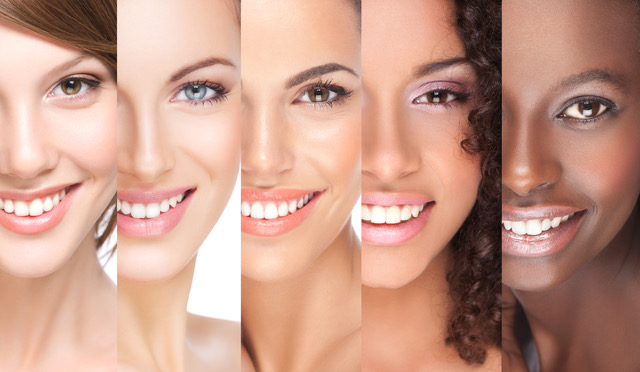The descriptions of skin phototypes are based on the Fitzpatrick classification, a system used to determine the skin’s reaction to UV sunlight. Here are integrated and more detailed descriptions of each of the six types:

Type I: This skin type, often characterized by very fair skin, red or blond hair, and blue or green eyes, always burns and never tans. People with this phototype have a high possibility of developing skin cancers such as basal and squamous cell carcinomas, and run a high risk for melanoma. Due to this high risk, it is highly advisable to use SPF 50+ creams and reduce sun exposure as much as possible.
Type II: This phototype has characteristics similar to type I, but with blond or brown hair and blue or brown eyes. Although people with this skin type often burn, they tan lightly. However, there is still a high chance of developing photoinduced skin cancers and melanoma. The use of SPF 50+ sunscreen creams is highly recommended.
Type III: This phototype, often with brown hair and eyes of any color, sometimes burns, but gradually tans to an olive color. The risk of developing skin cancer or melanoma is moderate for this phototype. We recommend the use of creams with a protection factor of 30 and the adoption of precautionary measures when in the sun.
Type IV: Type IV, often with brown or black hair and brown eyes, rarely burns and tans easily to a medium brown color. The risk of developing melanomas or epitheliomas is limited, but the use of protective UV creams with an SPF of 20 is still recommended.
Type V: This skin type, often associated with people of Middle Eastern, Asian or African descent, rarely burns and tans very easily to a dark brown color. The risk of developing melanomas or epitheliomas is small, but acral lentiginous melanoma may be more common in people with darker skin. The use of creams with SPF 10 is recommended.
Type VI: This phototype, often associated with people of African descent, never burns and is highly pigmented. Even though the risk of developing skin cancer is minimal, the use of UV protective creams with an SPF of 10 is still recommended to protect the skin from sun damage.